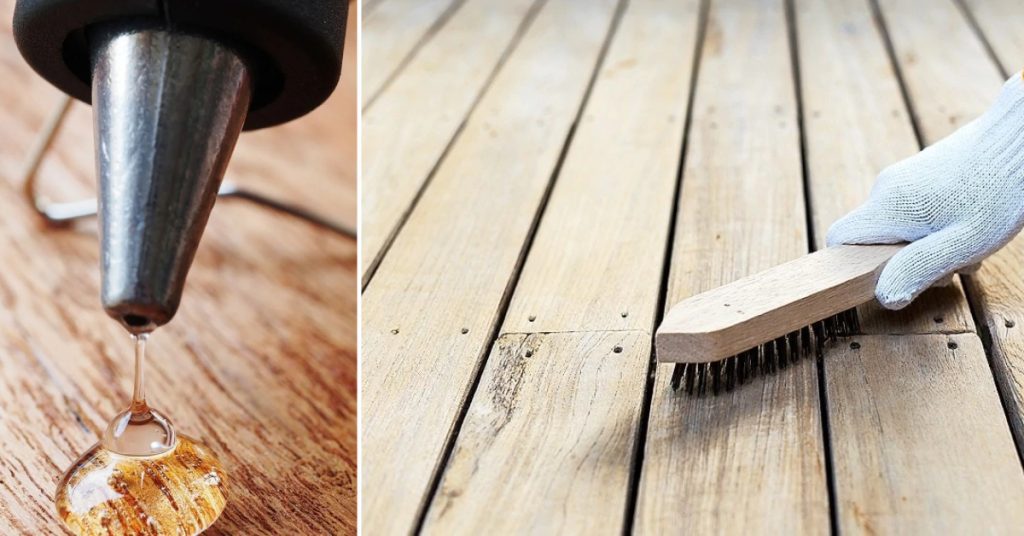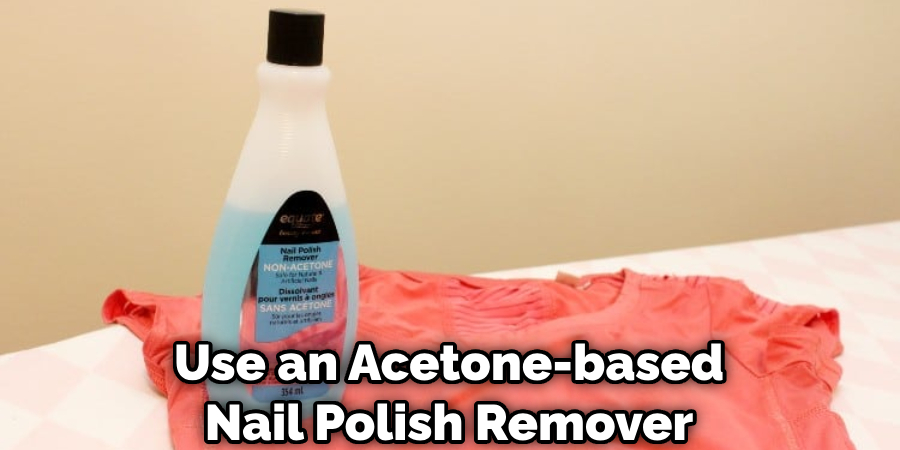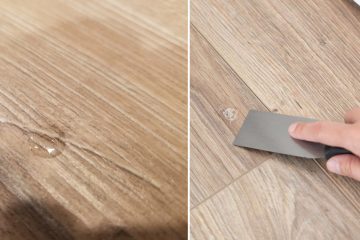It’s a moment of heart-stopping dread when a drop of super glue lands on your beautiful hardwood floors. Whether you’re a homeowner, DIYer, or professional, finding a safe method to remove superglue without damaging the wood is critical. This guide covers supplies, step-by-step instructions, and tips for how to get super glue off hardwood floors.

Key Takeaways:
- Act quickly if the glue is still wet to contain the spill
- Apply acetone; let sit for 2-3 minutes to dissolve the glue
- Gently scrape with a plastic putty knife to lift the residue
- Repeat the process until all visible glue gone
- Clean with a dry cloth; allow to fully dry
- Try oils, vinegar, and ice for stubborn glue bits
- Consider resealing the cleaned section
- Prevent future spills by using no-drip glue, work surfaces, tight lids, secondary containers
6 Reliable Steps for How to Get Super Glue Off Hardwood Floors
Here are 6 steps for how to get super glue off hardwood floors:
Step 1: Gather the Necessary Supplies
Gather these supplies before starting:
- Acetone or nail polish remover with acetone to dissolve the dried super glue
- Plastic putty knife or soft scraper that won’t scratch the wood floors
- Clean cloths or paper towels to wipe up excess moisture
- Fine grit sandpaper (optional) for smooth scratches
- Protective gloves
Step 2: Act Quickly if Wet
If you catch the super glue spill while it is still wet, take immediate action. Using a clean, dry cotton cloth or paper towel, gently dab at the wet glue to soak up and contain as much of it as possible. Do not wipe or rub aggressively at this stage, as that risks spreading the glue out to a wider area. Work swiftly but delicately.
Step 3: Apply Acetone
Pour a small amount of 100% acetone nail polish remover onto a fresh cloth or paper towel, ensuring it is thoroughly soaked. For best results, use an acetone-based nail polish remover. Gently press the soaked cloth directly onto the dried super glue spill site on your hardwood floors. Let it sit there undisturbed for 2-3 minutes. This gives the acetone time to react with and dissolve the glue.

Step 4: Gently Scrape
After allowing a few minutes for the acetone to soften and break down the glue, take your plastic putty knife/scraper and slide the non-abrasive edge under one corner of the spill. Applying light vertical pressure, barely scrape the floor surface while gently lifting the dissolving glue residue up and away. The glue should flake and peel away with little resistance, but take care not to dig into or scratch your floor’s finish.
Step 5: Repeat Process
Check if there is any remaining visible glue left over after scraping. Re-apply a few small drops of acetone and let it sit for 60-90 more seconds if you see stubborn sticky areas. Repeatedly use the plastic putty knife to gently lift additional glue away each time acetone is added. Continue this cycle as needed until all visible sticky residue has been removed from your hardwood flooring.
Step 6: Clean & Dry
Once glue removal seems complete, take a fresh dry cotton cloth and wipe gently over the area to soak up all moisture and acetone. Ensure no residue is left over and allow to fully air dry. Check over the spot from multiple angles to confirm no glue remains. Leaving moisture sitting risks damaging the wood over time.
You Can Check It Out to Get Super Glue Off Laminate Floor.
Extra Tips for Stubborn Residue
- Use oils (coconut, olive, vegetable) or vinegar: Dip cloth in oil/vinegar. Gently rub onto sticky residue. Let sit for 60-90 seconds. Wipe clean with a dry cloth.
- Harden old glue with an ice cube: Press the ice firmly onto the old glue spill. Leave ice on for 5-7 minutes. Makes glue cold and brittle. Scrape away hardened glue bits.
- Buff out minor scratches: Use extra fine (2000+ grit) sandpaper. Fold sandpaper and rub gently with grain. Take care not to remove excess finish. Check progress regularly
- Consider resealing the cleaned section: Examine wood for gaps, raw spots, etc. Use water-based polyurethane suited for existing finish. Preserves wood and prevents moisture damage.
You Can Check It Out to Remove Glue From Hardwood Floor Installation.

Preventing Future Adhesive Spills
- Purchase “no-drip” glue formulas
- Work on protected surfaces (cardboard, scrap wood etc.)
- Always seal bottles thoroughly and store upright
- Keep inside secondary container to catch leaks
You Can Check It Out to Get Braces Glue Off Your Teeth.
FAQs About How to Get Super Glue Off Hardwood Floors
Will Acetone Damage Hardwood Floors?
Acetone can damage hardwood floors by stripping the finish and causing discoloration or erosion of the wood. To prevent this, immediately wipe up any spills, use acetone cautiously, and test it on a small area first. If a spill occurs, blot it with a dry cloth and then clean the area with water and mild soap. Seeking professional help for significant damage is advisable.
What Will Remove Super Glue From Hardwood Floors?
To remove super glue from hardwood floors, you can consider using acetone, warm soapy water, vinegar, or commercial glue removers. These methods can help soften and loosen the glue for easier removal. Always test any cleaning solution on a small, hidden area of the floor first to ensure it doesn’t cause damage. If the super glue has caused significant damage, seek professional help for repair.
Conclusion
With some acetone-based nail polish remover and gentle scraping, dried super glue can be removed from hardwood floors without damaging finishes. Just go slowly and carefully using the method outlined. Your floors will look good as new again after a glue mishap.

